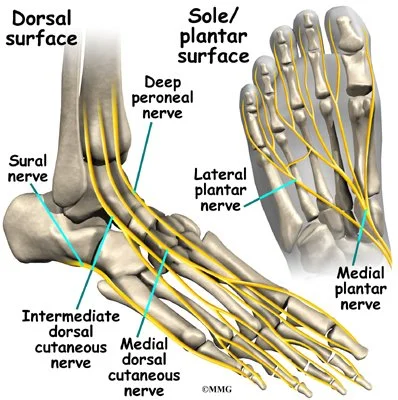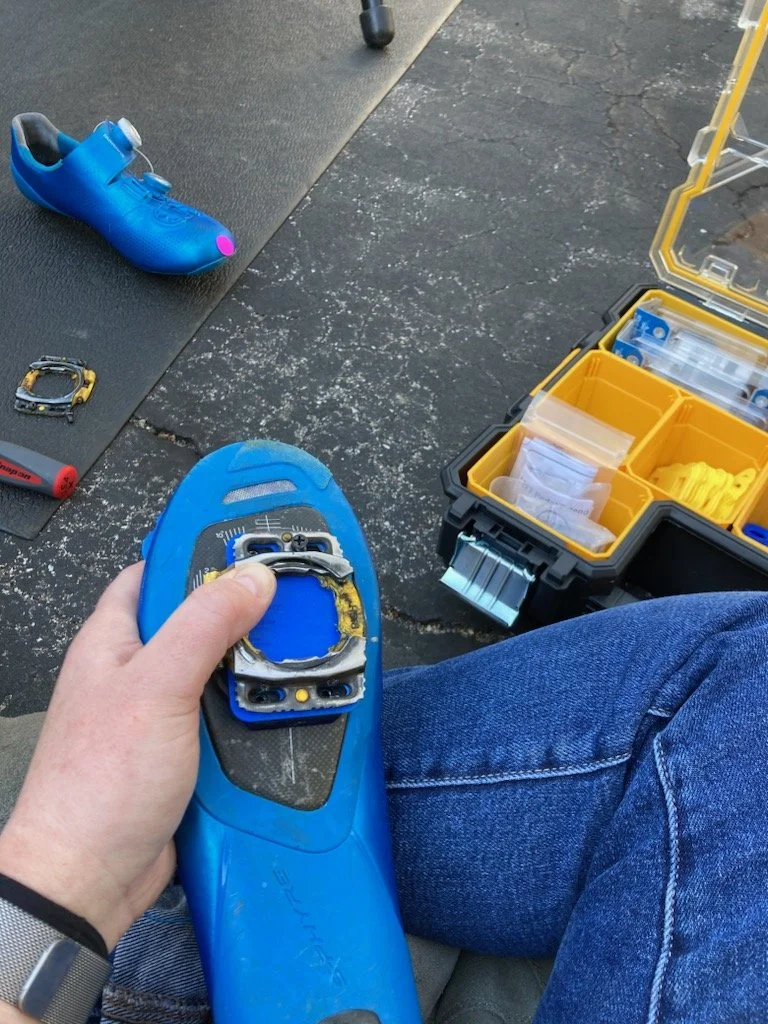How to solve the root cause of your foot pain
I work with feet often both as a physical therapist and as a bike fitter. If I had a dollar for every time a patent or client told me they have a hot spot on their foot or it goes numb, I’d be pretty rich. So let us simplify how to identify a root cause and remedy this situation.
Let’s think root cause approach, where is the pain or discomfort coming from?
Is the shoe/ toe box too narrow that it is squishing the toes and nerve that run between the toe bones?
Is there not enough vertical volume in the shoe that it is compressing the foot or toes?
Is there an apparent leg length difference because they always favor clipping out on one side, weight shifting on one side, beginning stride on one side, favoring one side with squat mechanics?
Is the cleat or shoe positioned or built to add pressure to one side of the foot?
Does numbness/ tingling travel anywhere else that there could be neural tissue tension?
You have discovered the root cause or you need to set up a consultation for help, great let’s move forward.
The biggest thing I have found, is keep it simple and try not to overcomplicate it. The foot is an amazing structure that supports all of our body weight, shock absorption with each step/ pedal stroke and demands. There are 26 bones and they are all made to move on one another. When you look at a cycling shoe it has a very rigid sole and higher end shoes are typically made of carbon fiber. Then you clip in so it becomes a fixed point (only movement is what float you have available).
If the shoe is too narrow it will compress the toe bones and nerves.
If there is not enough vertical volume, it will smash the top of the foot or toes and compress nerves.
If the shoe is too small, it can create hammer toes and compress toes and nerves.
If the cleat is too far forward, you will overuse toe flexors and may overstretch the nerves.
If the cleat is too far lateral, the knee may bow out and pull on the nerves.
All of this affects the nerves on the foot and the way your bony anatomy was designed to align for power, efficiency and comfort. When the bony anatomy aligns, the risk of repetitive, overuse injury is eliminated.
Now let’s remedy this situation:
Grab a partner and trace your foot in standing.
Measure the foot- both the length and widest point on the toe box.
If you are an athlete, you will want to measure on a hot day, after a strenuous run/ ride. If you are not an athlete, measure at the end of the day or after your have been on your feet for a while to allow for swelling and expansion of soft tissue.
Measure your shoe and see if the last is too narrow- length & width.
You will typically want to add 5-10 mm from barefoot, depending on thickness of socks.
I will add a link to my Instagram reel to help you out if you are a visual learner.
Find a shoe that fits your foot. Take your tape measure if you need to. I won’t think you’re crazy.
Tada… simple, right?
Finding a shoe that fits your foot may take a little work if you are unfamiliar with what you are doing. I go into shoe stores annually and update my shoe charts so that my recommendations are up to date. Lake has made sorting through which cycling shoe may fit your foot best super simple if you are familiar with terminology. I am always available to schedule a consultation or bike fit (including shoe pedal fit) if needed.
Check out my instagram reels if you need more how to’s: Click Here
You should always consult your healthcare practitioner(s) for medical advise and what is best for your care. The purpose of this blog is to centralize and share information while connecting with others.




